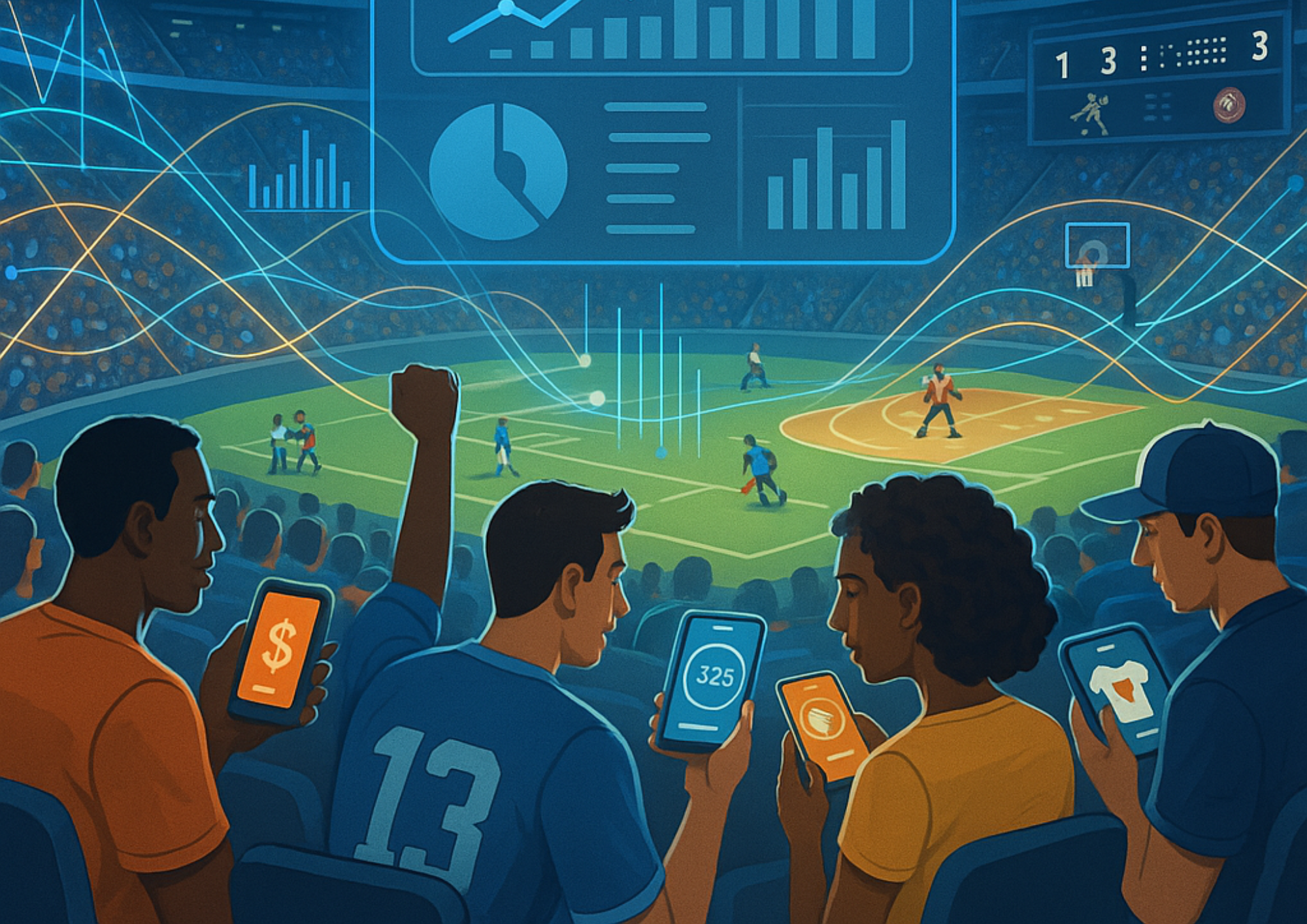The US sports industry has always been fueled by passion, but in today’s data-driven era, passion alone doesn’t drive revenue. CRM is no longer just the marketing system sending out monthly newsletters; it’s calling the shots in real time. Following the success of our recent whitepaper, The Playbook for Modern Fan Engagement in US Sports, where we explored how CRM is redefining fan engagement, the objective is clear: CRM must now be the engine of monetization in US Sports.
It’s About Value, Not Volume
Most sports organizations don’t have a fanbase problem; they have an engagement and activation problem.
According to Deloitte, while 76% of sports organizations collect fan data, only 12% are effectively monetizing it. That’s the gap CRM is designed to close.
Leading leagues like the NBA and NFL are already deploying AI-powered CRM strategies that predict fan behavior, deliver personal and specific offers, and turn engagement into revenue. But this isn’t just about sending better emails. It’s about creating intelligent fan ecosystems where every seat, stream, click, and cheer becomes a monetizable insight.

The Rise of the “Fan Revenue Stack”
Your CRM is no longer just a marketing database, it’s the central point of fan revenue and a single source of truth, that powers:
- Dynamic ticket pricing based on fan behavior and demand peaks
- Real-time merchandise offers triggered by in-game moments
- Event discovery and cross-promotion that fills seats beyond game day
- Loyalty engines that reward engagement across content, social, and retail
- Sponsor ROI dashboards that turns fan attention into brand equity & market value
CRM is now directly tied to top-line revenue, so if your CRM system isn’t aligned with your commercial objectives, it’s underperforming and unutilized.
Why CRM ROI Is the Metric That Matters in 2025
Most general CRM strategies focus on engagement metrics: open rates, clicks, and app installs. In US Sports, that’s yesterday’s scoreboard, the new CRM scoreboard is:
- $ per fan per year
- Repeat purchase frequency
- Conversions across multiple touchpoints
- Lifetime Value across customer lifecycle segments
Organizations that embed revenue KPIs into CRM operations are seeing staggering returns. This new approach focuses on more monetization journeys instead of one-off campaigns.
From Static Journeys to Predictive Revenue Paths
US Sports brands need to move past simple “journey mapping” and start building predictive revenue paths that adapt in real time:
- A fan clicks a jersey email? Trigger a discount on their size.
- Fans scan in late to a game? Offer fast-track concessions next time.
- Haven’t purchased anything in six months? Re-engage them with a loyalty offer that syncs with their app behavior, not just inbox history.
CRM listens, learns, and earns, all without a human hitting send.
CRM as a Sponsorship Asset: The Untapped Goldmine
One of the most overlooked use cases is how to use CRM as a sponsorship activation tool.
With an optimized CRM system, US Sports brands can show sponsors:
- How many fans engaged with branded content
- What actions did they take after exposure
- How it impacted purchase intent
Here is where brands stop selling logo placement and start selling proof of impact. Data-backed sponsor reporting is becoming a non-negotiable. If you can’t measure it, you can’t monetize it. CRM is how you do both.
Final Whistle: Monetization is the New MVP
Fan experience still matters. But fan monetization is the difference between staying competitive and being disrupted. CRM is no longer a back-office function. It’s the commercial quarterback, driving both strategy and revenue.
For sports brands ready to level up, the question isn’t “Should we upgrade CRM?” It’s “Are we ready to let CRM lead our revenue strategy?”
Read all about it in our latest whitepaper: The Playbook for Modern Fan Engagement in US Sports






